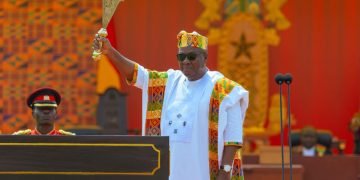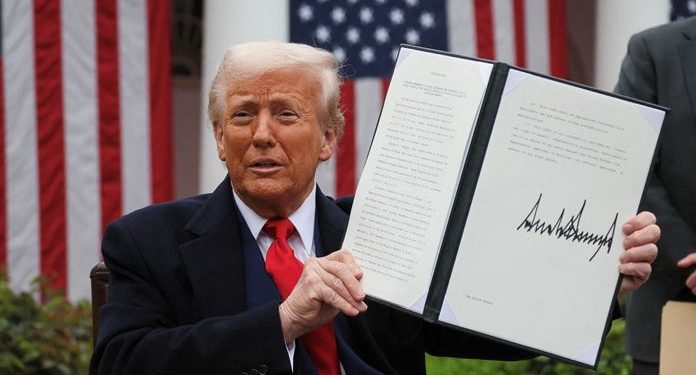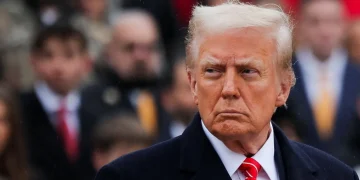President Donald Trump declared a US economic emergency and announced tariffs of at least 10% across all countries including Ghana, with rates even higher for 60 countries or trading blocs that have a high trade deficit with the US.
- China hit hardest: China, the second top exporter to the US behind Mexico, will now face a 54% tariff and has threatened countermeasures. The EU is also preparing countermeasures.
The US president, who said the tariffs were designed to boost domestic manufacturing, used aggressive rhetoric to describe a global trade system that the United States helped to build after World War II, saying “our country has been looted, pillaged, raped and plundered” by other nations.
The action amounts to a historic tax hike that could push the global order to a breaking point. It kickstarts what could be a painful transition for many Americans as middle-class essentials such as housing, autos and clothing are expected to become more costly, while disrupting the alliances built to ensure peace and economic stability.
Trump said he was acting to bring in hundreds of billions in new revenue to the U.S. government and restore fairness to global trade.
“Taxpayers have been ripped off for more than 50 years,” he said. “But it is not going to happen anymore.”
Here’s what other world leaders are saying.
- Global markets rattled: After-hours US stock markets fell sharply, as did Asian markets, after the tariff announcement. And gold hit a new record high as investors seek safer investments.
Leading economists told CNN they feared the tariffs could lead to a global recession.
President Donald Trump’s massive tariffs announced on dozens of nations Wednesday were pitched as “reciprocal,” matching what other countries charge the United States dollar for dollar, even taking into account non-tariff barriers like value-added taxes and other such measures.
But the actual calculation the Trump administration seems to have used appears as though it is not reciprocal at all.
Matching countries’ tariffs dollar for dollar is an incredibly difficult task, involving pouring over each country’s tariff schedule and matching a complex array of products, each of which take different charges for different variants.
Instead, the Trump administration seems to have used quite a simple calculation: the country’s trade deficit divided by its exports to the United States times 1/2. That’s it.
The calculation was first suggested by journalist James Surowiecki in a post on X and backed up by Wall Street analysts.
For example, America’s trade deficit with China in 2024 was $295.4 billion, and the United States imported $439.9 billion worth of Chinese goods. That means China’s trade surplus with the United States was 67% of the value of its exports — a value the Trump administration labeled as “tariff charged to USA.”
But it was no such thing.
“While these new tariff measures have been framed as ‘reciprocal’ tariffs, it turns out the policy is actually one of surplus targeting,” noted Mike O’Rourke, chief marketing strategist at Jones Trading in a note to investors Wednesday.
“There does not appear to have been any tariffs used in the calculation of the rate. The Trump administration is specifically targeting nations with large trade surpluses with the United States relative to their exports to the United States,” he added.
The simple calculation used by the Trump administration could have broad implications for countries America depends on for goods — and the global companies that supply them.
“Knowing how these rates were calculated highlights that they are generally going to be most severe on the nations that US companies rely heavily upon in their supply chain,” O’Rourke said. “It is hard to imagine how these tariffs would not wreak havoc upon the profit margins of major multinational corporations.”
Source: CNN






































































